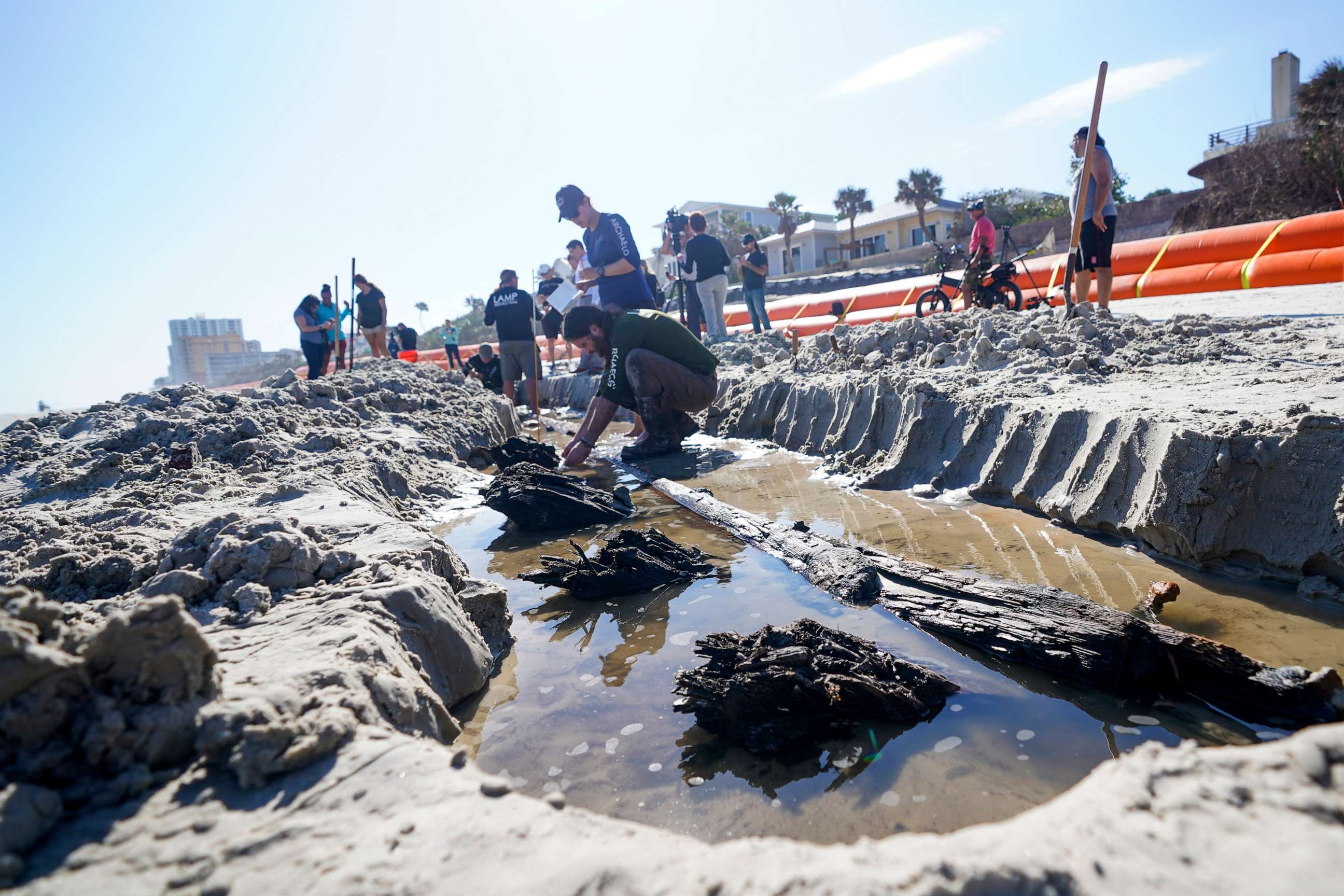From fossils discovered in Mongolia to 19th century shipwrecks, some of the biggest discoveries of the year
A new semiaquatic predator was also discovered by scientists this year.
Scientists have made remarkable findings this year in the fields of archeology and paleontology.
From researchers exploring the inside of a shipwreck in the Atlantic Ocean to discovering a new dinosaur species, 2022 produced fascinating discoveries.
Here are some of the notable discoveries of 2022:
Buried 19th-century shipwreck likely uncovered due to hurricanes on Florida beach

A wooden ship from a 19th-century shipwreck was discovered on a Florida beach due to beach erosion weeks after Hurricanes Ian and Nicole made their way across the state in September and November, respectively, according to archeologists.
Members of the St. Augustine Lighthouse Archaeological Maritime Program were at Daytona Beach Shores to study the shipwreck. The uncovered wreckage is believed to be 80 to 100 feet long.
Scientists discover fossils of new predatory dinosaur species in Mongolia

Earlier this month, scientists discovered a new fossil in Mongolia that was likely a semiaquatic diving predator.
Scientists found an almost complete skeleton in the Omnogovi Province of a bird-like creature. The specimen was named "Natovenator polydontus," or "Swimming hunter with many teeth," according to a paper published in Communications Biology.
Scientists find evidence of oldest known surgical limb amputation that occurred 31,000 years ago

According to a study published in Nature, a human skeleton that dates back 31,000 years ago to the Stone Age showed the first known successful limb amputation on a human.
The noteworthy finding was found buried in the Liang Tebo limestone cave located in East Kalimantan, Borneo showing the left foot had been amputated and that the person recovered.
Egypt's newly discovered ancient tombs are nearly 5,000 years old

In March, Egypt announced the discovery of five ancient tombs in the ancient city of Saqqara. According to Egypt’s antiquities ministry, the tombs date back to the Old Kingdom (c.2700–2200 BC) and First Intermediate (c.2181–2055 BC) eras.
The tombs were excavated near the Pyramid of Merenre, which was built during the Sixth Dynasty, and belonged to “top officials,” according to the ministry.
Legendary Spanish shipwreck discovered on Oregon coast
According to National Geographic, archeologists discovered remains of what’s believed to be the Santo Cristo de Burgos, a 17th-century Spanish galleon that was traveling from the Philippines to Mexico in 1693, on Oregon’s northern coast.
The ship earned the name the “Beeswax Wreck” because it carried loads of beeswax, according to NatGeo.
ABC News' Meredith Deliso, Julia Jacobo and Alexandra Svokos to this report.




